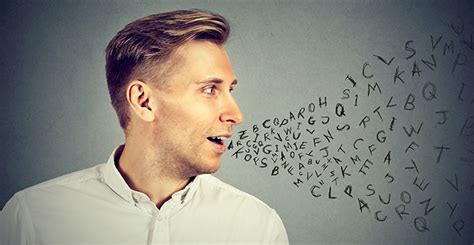11 June 2020
Is speaking English killing the British?
The Japanese think so.
By Richard Pooley

When running management training courses for international businesspeople, often a mix of native and non-native English speakers, I would give the following facts:
“The Japanese eat very little fat and suffer fewer heart attacks than the British or Americans. The French eat a lot of fat but also suffer fewer heart attacks than the British or Americans.
The Japanese drink very little red wine and suffer fewer heart attacks than the British or Americans. The French and Italians drink lots of red wine but also suffer fewer heart attacks than the British or Americans.”
“So”, I would ask, “what is the obvious conclusion?
Eat and drink what you like, it is speaking English that can kill you.”
The non-native English speakers would always laugh.
I still use this as a good example of correlation not meaning causation, something which is often forgotten or conveniently ignored when analysing the coronavirus statistics with which we are bludgeoned on a daily basis. And I was reminded of it when sent a video clip of a Japanese TV show by friend and Shaw Sheet reader, David Lee. He wanted to know what I thought of it. Despite spending a few years living and working in Japan, my Japanese has never risen beyond survival level and is a long way below that now. Even so, it wasn’t hard to work out what the TV show’s presenters were telling their Japanese viewers: it’s speaking English which is causing non-Japanese to die from Covid-19 in far greater numbers than us Japanese.
The clip shows a Japanese woman saying a sentence in English in front of a piece of cloth. The sentence – “This is a pen” – are the first four words in English learned by every Japanese child at school. Ten years of compulsory English lessons later and they can still say little more than this in English, though they can understand and write far more. As the woman says “pen”, the cloth flips forward. This is because “p” in English is a plosive, a consonant sound which occurs when you trap air behind your lips before suddenly releasing it. In that ejected air of any gaijin speaker infected with Covid-19, the Japanese TV presenters explained, are droplets bearing the virus. Japanese does not have such plosives. Ipso facto*, the death toll from Covid-19 in the UK and USA is over 150,000 and rising, whereas in Japan it has yet to reach 1000 and is unlikely to do so.
Amusing nonsense, of course. It ignores the fact that English-speaking nations such as Australia and New Zealand have had Covid-19 deaths of 102 and 22 respectively (4.1 and 4.4 deaths per million), whereas Japan has had 920 Covid-19 deaths (7.3 deaths per million). It also reveals a widely-held belief in Japan that all gaijin speak English. Gaijin literally means “outside people or foreigners”, but in fact is normally used to refer to white Europeans, North Americans and Australasians. Many of my Japanese clients were genuinely surprised to learn that not all the people they would be living and working among in, say, Germany or France would speak fluent English. This English-kills theory also ignores the fact that non-English speaking countries such as Taiwan and Vietnam have done so much better than Japan in the Covid-19 death comparison competition (7 and 0). Worse for Korean-hating Japanese, of which there are many, the number of Covid-19 deaths in South Korea at 5.4 per million is lower than in Japan.
The TV show chose one out of forty-three reasons suggested by Japanese people to explain why there have been relatively few Covid-19 deaths in Japan. It’s a fascinating list, even if you ignore those which Google Translate fails to turn into comprehensible English. What’s more, many of the reasons given are echoed by Japanese infectious disease experts. All are agreed that there is no single over-riding explanation, except perhaps Taro Aso, the Finance Minister, who said late last month that it was because of the “superiority of the Japanese people”. Actually, that is probably a very common belief among ordinary Japanese, raised from birth to believe that they and their society are exceptional.
Japan never imposed a strict lock-down, although a state of emergency existed in major urban areas from 7 April and in all of Japan from 16 April, and ended on 25 May. People were able to go where they liked. Businesses, including bars, restaurants, hotels and hairdressers, have remained open throughout the pandemic. Few tests have been carried out and no high-tech app developed to track and trace.
From the start Japan had several advantages over European countries. Crucially, it had been here before. It has public health centres all over the country, staffed by some thirty thousand nurses who were already experienced in tracking down influenza and tuberculosis infections. All Japanese, by the way, are required to have the BCG tuberculosis vaccine; many medical experts believe this has conferred immunity from Covid-19. Like Germany, Japan’s response was not centrally-directed. The Japanese are notoriously slow in reaching decisions. Happily, unlike in the aftermath of the 1995 Kobe earthquake or the 2011 Tohoku tsunami, local politicians and officials did not wait for orders from central government before jumping into action in January, when the first case occurred. The nurses swiftly identified groups of infections from a single location, e.g. a hospital, or inside one, e.g. a care home, of which Japan has more than most developed countries, and stopped the disease from getting out of control.
It is probable that many cases were not spotted and possible that some deaths which should have been reported as caused by Covid-19 were not. Mental illness and catching an infectious disease are regarded as shameful by many Japanese. The first suggests a genetic failure; the second a lack of hygiene. And so some people may have lied to contact tracers or just stayed out of sight. Doctors see no reason to bring shame on a family by giving an infectious disease as the cause of death unless they are certain it is. Many foreigners in Tokyo and Osaka complained that whilst they were sure they had the coronavirus symptoms they were refused tests and admission to hospital. One antibody test on five hundred people in Tokyo suggested the number of cases in the capital was twenty times larger than has been officially reported. Even so, the overall number of deaths from all causes in Japan is little higher than normal. It looks as though those savvy nurses did their job well.
The Japanese also benefited early-on from what, at first, was a public relations disaster – the handling of the Covid-19 outbreak on the Diamond Princess cruise ship in Yokohama harbour in February. Medical experts learned how the virus spread and passed on this information to those combatting it inside Japan. Meanwhile those who died on the ship – gaijin all – were not included in the Japanese death rates.
Another reason given for the relative Japanese success are the still low (though fast rising) levels of obesity in the population, especially when compared to the percentage of Brits and Americans who are obese.
But the greatest advantages surely that the Japanese have over Westerners is their obsession with personal hygiene, and the various customs and habits which make social distancing the norm.
I mentioned in last week’s article why the wearing of masks is common in Japan: to stop infecting others. The Japanese think it disgusting to blow your nose on a handkerchief and put the piece of cloth back in your pocket. As a client once told me after several sips of his company’s product – Kirin beer – it’s no different to stuffing used toilet paper into your pocket. If they wish to blow their nose, they will raise their mask, snort into a piece of tissue and immediately find the nearest rubbish bin in which to throw it. And they’ll wash their hands or use a disinfectant as soon as they can afterwards. Thirty years ago the British head of Nippon Lever, the Japanese subsidiary of Unilever, in answer to my question as to how the company was doing, informed me that a Japanese woman, on average, washes her hair one and a half times a day. Japan was number one in the world for sales per head of Unilever shampoo. If my observations on the state of Japanese grooming during my visit last October are correct, shampoo sales must still be filling Unilever’s coffers. Tokyo still has more hairdressers per square kilometre than any other major city in the world. And they offer far more than just a simple haircut. Arrive at the front door of a Japanese house or flat and you will be required to swap your shoes for slippers to avoid you bringing in anything foul from the street outside. And you will be expected to wash your hands as soon as possible (especially if your are a gaijin).
Instead of the British “Stay at home!” the Japanese were asked to avoid the “Three C’s” – Closed spaces, Crowded spaces and Close-Contact settings. Yes, the national message was expressed in despised English (and using, you will have already noted, a couple of droplet-ejecting plosives). Why? So that there would be a memorable label. The Japanese love these. Toyota’s “Five Why’s” is a famous example. No mention of one or two-metre social distancing. Not necessary. The Japanese do it naturally. They only shake hands with gaijin. They bow to each other. Kissing or hugging in public is still frowned upon, even between lovers. Watch them perform the umbrella dance on a rainy day in Tokyo; only the clumsy gaijin bump elbows or umbrellas. Commuters on Japanese subway trains are forced to squeeze together by white-gloved guards. Answer? Wear a mask even when you don’t have a cold or suffer from hay fever.
Europeans and Americans have so much to learn from the Japanese and other east Asian people about dealing effectively with infectious disease epidemics. Will Covid-19 teach us to live more hygienically, especially us men?
I’ll leave the last piece of wisdom to Kazuto Suzuki, Professor of Public Policy at Hokkaido University. “Social distancing may work, but it doesn’t really help to continue normal social life. The ‘Three C’s’ are a much more pragmatic approach and very effective, while having a similar effect.” If only Messrs Johnson and Cummings would hear what Suzuki-san is saying.
*“Kekko to shite” in Japanese; the last word, Irish readers may like to know, is pronounced “sheetay”


